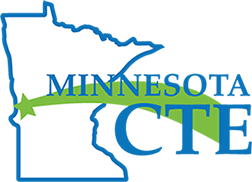Advance CTE has released its modernized Career Clusters® Framework, which is designed to serve as a bridge between education and work and a central building block for consistently designed and high-quality Career and Technical Education (CTE) programs, and accompanying resources to support implementation.
It will be up to each state how it uses the new Framework. While most states used the previous iteration in some form, variations were made to reflect the needs of states and local communities. States may adopt the new Framework in whole or in part or decide to use it in different ways.
One policy implication of the new Framework is for federal reporting. The U.S. Department of Education (US ED) will require states to align Perkins data with the modernized Framework starting with the 2025-26 academic year and submit data for the federal Perkins Consolidated Annual Report (CAR) starting in January 2027. This will not necessarily require any programmatic changes but rather cross-walking current programs to the new Clusters for reporting on student enrollment and performance.
To support implementation, Advance CTE has developed a suite of resources, including explainers, messaging tools, and a crosswalk listing each Career Cluster and Sub-Cluster with corresponding North American Industry Classification System (NAICS), Standard Occupational Classification System (SOC) and Classification of Instructional Programs (CIP) codes. The organization will also be providing ongoing implementation support.
The modernization of the Framework has been a two-year process, incorporating feedback from more than 4,000 people across state and local secondary and postsecondary leaders, employers, national organizations including educator groups and career and technical student organizations, CTE instructors, and other partners.
The updated Framework consists of 14 Clusters and 72 Sub-Clusters to serve as the primary organizing structures for CTE programs:
|
|
|
|
|
|
|
|
|
|
|
|
|
|
National Changes
No field has been eliminated from the Framework, though some have been shifted into other Career Clusters, combined with other industry sectors, or renamed. Major changes include the following:
- Energy has been merged with Natural Resources into a new, realigned Career Cluster.
- Information Technology has been expanded and renamed to Digital Technology.
- STEM has been eliminated and these dimensions spread across multiple Clusters.
- Law, Public Safety, Corrections & Security and Government & Public Administration have been combined into Public Service & Safety.
- The Health Sciences & Human Services Career Clusters have been combined into the Healthcare & Human Services Cluster.
- Three Clusters – Digital Technology, Marketing & Sales, and Management & Entrepreneurship –are designated as both standalone Clusters and as Cross-cutting Clusters that provide skills and prepare learners for careers relevant across industries and sectors.
- The Clusters and Sub-Clusters include new technologies such as automation and robotics, clean and alternative energy, artificial intelligence, and remote-operated vehicles.
Minnesota Changes
The Minnesota version reflects a less significant shift in practice from what other states might be experiencing. Minnesota has long used the wheel image, and used Career Fields, while other states are adopting these for the first time. In addition to the national changes, Minnesota changes include:
- Career field labels of Agriculture, Food, & Natural Resources, Business & Marketing, Family & Consumer Sciences, Health/Human Services Education, and Trade & Industry were added to the Cultivating Resources, Investing in the Future, Creating & Experiencing, Caring for Communities, and Building & Moving labels to fit Minnesota’s ecosystem and shared terminology.
- Feedback: FCS teachers do not “see” themselves on the wheel. AFNR Education is both Agriculture and Energy & Natural Resource. Business includes more than just Financial Services.
- The Digital Technology, Marketing & Sales, and Management & Entrepreneurship clusters are designated as both cross-cutting clusters and as standalone clusters within Business & Marketing—to reflect Minnesota teacher licensure and programs of study.
- Feedback: Business teachers are able to teach Digital Technology, Marketing & Sales, and Management & Entrepreneurship within their license
- Digital Technology is shared between Business & Marketing and Trade & Industry to reflect Minnesota teacher licensure and CTE programs of study.
- Feedback: Communications Technology teachers are able to teach Digital Technology within their license.
- Education is shared between Family & Consumer Sciences and Health/Human Services Education to reflect Minnesota teacher licensure and CTE programs of study.
- Feedback: FCS teachers are able to teach Education within their license.
- The 12 Career Ready Practices are further described on the back of the wheel, and the three methods of teaching those practices are on the front, so that Work-Based Learning and Leadership & Social-Emotional Learning are clearly visible in the wheel.
- Feedback: Work-Based Learning teachers, Career and Technical Student Organizations, etc. commonly do not see themselves on the current wheel.
- The Unmanned Vehicle Technology sub-cluster/pathway was renamed Uncrewed Vehicle Technology to remove gendered terminology.



